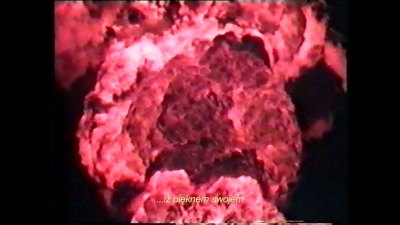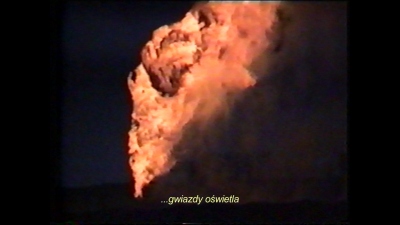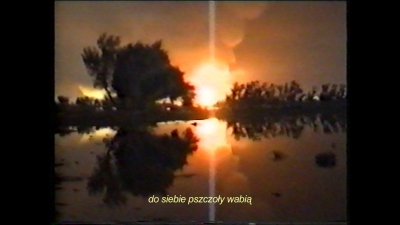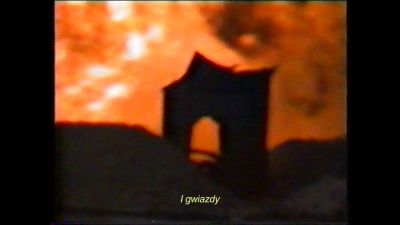Monira Al Qadiri
Behind the Sun
The film by Monira Al Qadiri refers to the 1991 Gulf War during which oil wells in Kuwait were set on fire by the retreating Iraqi army. The artist juxtaposes images showing large swathes of burning petroleum (taken from amateur documentary videos) with audio of monologues from Islamic TV programmes. At the time, the state television often featured qualified voice-over artists reciting Arabic poetry pronouncing God through descriptions of natural miracles, beautiful landscapes, and animals; however, the narrative was never directly related to the Koran. The artist’s gesture, juxtaposing images from various sources and spoken word, created an almost coherent, archetypal representation of the biblical apocalypse: fire on the ground and the sky covered with black smoke. This suggestive vision of inferno and the end of the world accompanied by lofty poetry has become an emotional and captivating commentary on the social and political realities of the war.
Monira Al Qadiri is a visual artist from Kuwait, born in Senegal. She studied in Japan, where she obtained a PhD in intermedia arts at the University of the Arts in Tokyo. She currently divides her time between Kuwait and Berlin. In her work, the artist focuses on the Middle Eastern aesthetics of unhappiness resulting from poetry, music, art, and above all from religious practices. In her work she often portrays – with detachment and humour – an absurd mixture of grief resulting from tradition and the joys of everyday life. Al Qadiri is one of the few artists in the Persian Gulf region who is not afraid to contest corruption, religion, and patriarchy; she also daringly experiments with gender roles, often putting her life at risk.



